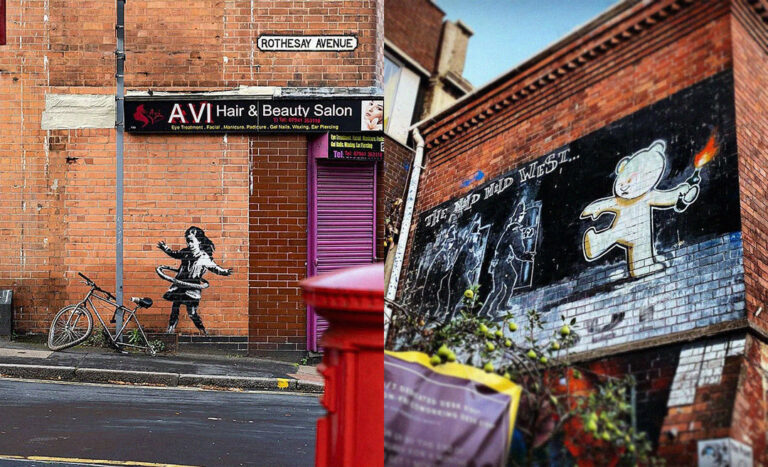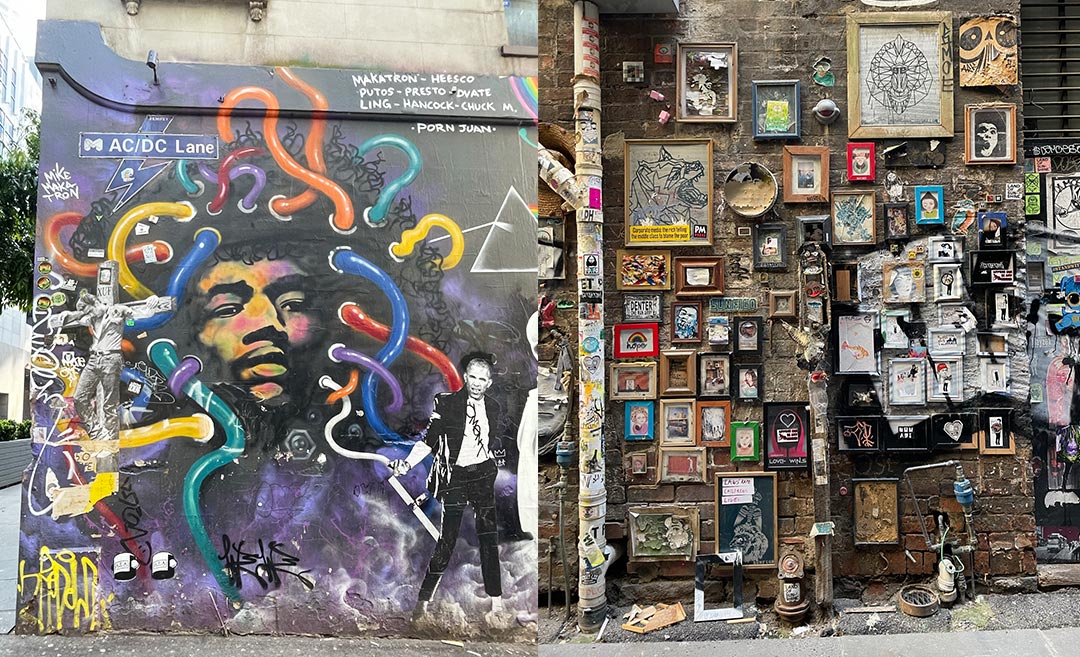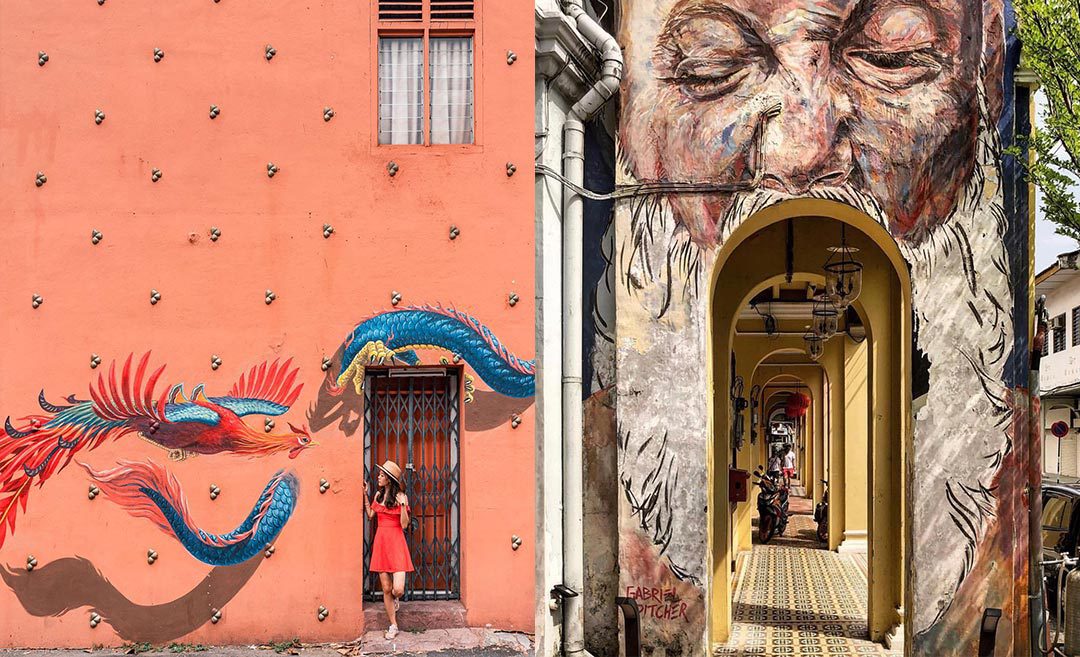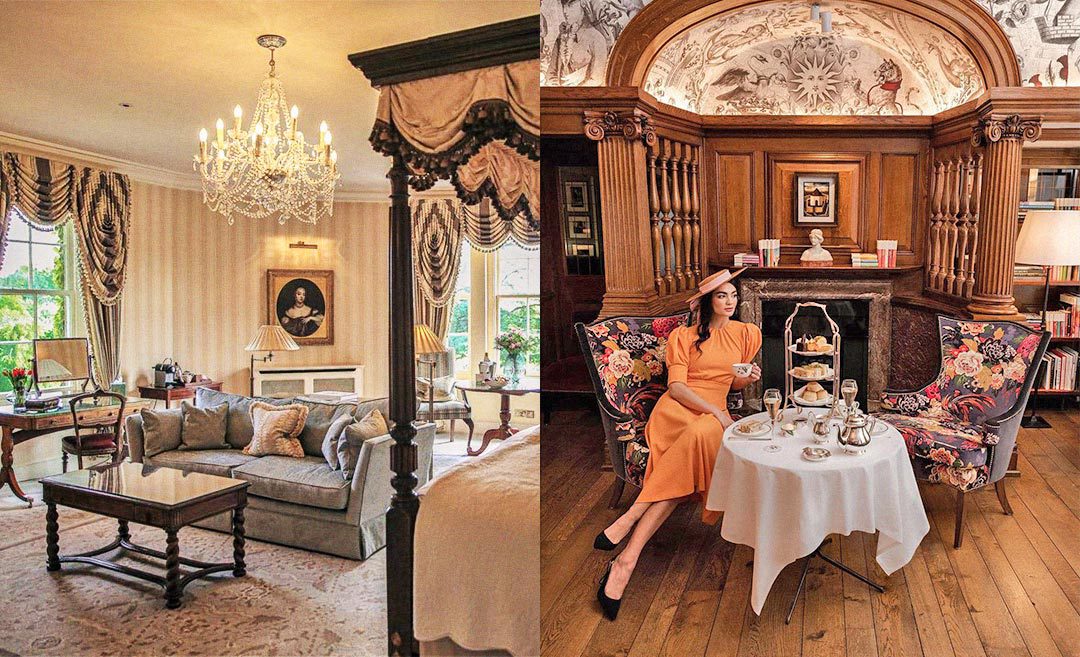Banksy is unquestionably the most well-known street artist in the world — and definitely one of the most mysterious and controversial! Thought to be from Bristol, England, he entered the graffiti community in the 1990s and quickly developed his distinctive, controversial approach. He seems to take great pleasure in approaching a city secretly, working through the night, and maintaining his anonymity.
Today, art collectors spend six figures for originals of Banksy’s controversial pieces since images of them frequently go viral. Unfortunately, no matter how much they are valued, the street pieces often become damaged or stolen, making them temporary.
The following renowned works are still available to view, but we can’t promise how long they’ll be there.
‘The Mild Mild West’, England
‘The Mild Mild West’ is perhaps Banksy’s first well-known large-scale mural. Painted in 1997, it depicts a teddy bear throwing a Molotov cocktail at three riot police covering the advertisement of a former law firm on Stokes Croft in Bristol. The incident at Winterstoke Road, where riot police started to attack partygoers, served as a specific catalyst for the artwork.
Locals take great pride in the artwork as it strongly represents the city’s past. It has also been referred to as a classic example of Bristol heritage, demonstrating how a laid-back hippie can still rebel against authority and power, including capitalism and consumerism.
Sadly, the painting was defaced with red paint by an anti-graffiti group in April 2009. However, it was immediately fixed.
Where to find it: 80 Stokes Croft, Bristol, BS1 3PR, England
‘Falling Shopper’, England
This enormous stencil, which dates back to 2011, depicts a woman and a shopping cart plummeting to the ground from a tremendous height. It is strategically placed in London‘s upscale Mayfair shopping district.
Intended to spark discussion — in true Banksy fashion — about the drawbacks of consumerism, this piece was designed to stir debate. Located on a concrete office tower, where it will presumably stay for a bit longer, is this brilliant spin on the phrase ‘shop ‘til you drop’.
Where to find it: Bruton Street, London, W1J 6QQ, England
‘Sight-Seeing Rats’, France
Two well-dressed rats can be spotted on the side of a bridge across the Seine with the Eiffel Tower looming behind them. One holds a parasol, and the other has a walking stick. The charming rats highlight the fact that Paris is a city of the flaneur or leisurely walker; it’s a rare instance of a Banksy piece without political significance.
Where to find it: Pont Rouelle, 75016 Paris, France
‘Man Offering Dog a Bone’, France
Another incredible illustration of Banksy’s inclination for political commentary is this artwork. It appears to be nothing spectacular to someone casually passing by — just a man offering a dog a bone. However, look closely; you’ll notice the dog only has three legs, and the man clutches a saw behind his back.
Given that the artwork is situated in the same area as the 1968 student uprising against the government and capitalism, it is intended to spark discussion on social progress.
Where to find it: Rue Victor Cousin, 75055 Paris, France
‘Girl With Balloon’, England
‘Girl With Balloon’, possibly Banksy’s most well-known artwork, is of a young girl losing her red heart-shaped balloon. Although it first debuted in London, copies of it have since been found elsewhere. It honours childhood and the passing of innocence.
The picture is ambiguous, as are most of Banksy’s creations. The spectator must decide whether the girl is reaching out to grab the balloon or, more likely, has let it fall from her grasp and is now watching in sorrow as it drifts away.
Where to find it: Waterloo Bridge, South Bank, London SE1, England
‘Kissing Coppers’, England
In the ‘Kissing Coppers’ graffiti piece, two British policemen are shown kissing. In 2004, it was first displayed on the wall of the Prince Albert Pub in Brighton. Black and white are painted on the two police officers in full uniform, with handcuffs and batons clearly visible around both of their belts.
Created in Brighton, a bustling city that’s been dubbed the UK’s LGBTQ capital, it seemed only fitting that ‘Kissing Coppers’ can be found here, as the location is a vital aspect of Banksy’s work. The city hosts the biggest pride festival in the UK every year. The LGBTQ community’s long history in Brighton dates back to the Napoleonic Wars in 1803.
As a result of frequent vandalism, this striking piece has suffered significant damage, and Prince Albert Pub eventually opted to have it taken down and transferred to a canvas. In 2008, it was replaced with a duplicate, and an anonymous buyer eventually bought the original.
The sale was met with a great deal of criticism; most people disagreed with the decision, claiming that removing ‘Kissing Coppers’ would not only be a tragic loss for Brighton’s thriving community, but also betray the true intent of street art.
It was so well-known that a replica eventually appeared on Frederick Street so that people might still view it.
Where to find it: Frederick Street, Brighton BN14TA, England
‘Nola (Girl with Umbrella)’, USA
‘Nola’ portrays a little girl in a dress carrying a black umbrella while stretching out one hand to feel the downpour. The background is a block of solid grey with white rain falling from inside the umbrella.
This mural, first seen on a wall in New Orleans, is rendered in Banksy’s trademark graffiti-spray-stencil technique. The captivating picture of a girl getting soaked in the rain while under her umbrella is a reference to the devastation caused by Hurricane Katrina in 2005. It was made worse by the failure of the flood defences that were supposed to shield the population from such a catastrophe.
An umbrella obviously helps keep the person holding it dry and shielded from the weather. However, Banksy’s art serves as a stinging condemnation of FEMA and the government’s response to protect and assist the citizens severely affected by Hurricane Katrina.
The art emphasises that things or organisations built and supposed to protect us may, at times, do the opposite.
Where to find it: 1098 Kerlerec Street, New Orleans, LA 70116, USA
Love Is In The Air, Palestine
Another iconic Banksy piece, ‘Love Is In The Air’ is more commonly known as ‘Flower Thrower’ or ‘LIITA’. It features a young man dressed as a militant sporting a bandana to cover the lower half of his face caught in the act of tossing a bouquet of flowers as though it were a Molotov cocktail or grenade.
Apart from the figure’s evident hostility, he is preparing to unleash a unifying symbol of love and peace rather than a weapon. This particular piece is the perfect example of Banksy’s formal creative approach as well as his fervent political involvement because it makes a strong plea for peace.
‘Parachuting Rats’, Australia
Just as the name suggests, ‘Parachuting Rats’ sees a bunch of purple rats with aviator sunnies parachuting down a wall in Melbourne. Equal parts humorous and controversial, this particular piece is done in Banksy’s signature style.
“They exist without consent,” Banksy says of rats. They are despised, hunted, and persecuted. Rats are the ideal role model if you’re filthy, insignificant, and unwanted. You can succeed in the rat race, but you’re still a rat.
Out of all the works listed here, the piece you’re most likely to see in person is this one. Melbourne’s street art scene is a respectful one. Although street artists normally cover up entire artworks to place their own, ‘Parachuting Rats’ has remained largely unharmed, as it is currently one of the last surviving Banksy works left in the city. This is likely as fellow street artists see the value in Banksy’s work.




